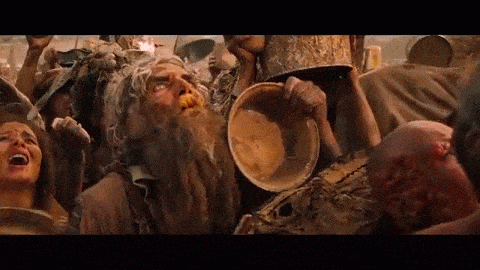What If The World Runs Out Of Clean Drinking Water?
Water is the clear, tasteless liquid that we often take for granted. Every day you do all these things from morning to night using water like it’s not a big deal and without a second thought. But one day, you try it, and… nothing. The water’s gone. Scary, right? Well, let’s dive into this story together. Around 71% of our Earth is surrounded by Water. So you might think there is not much to worry about right? But 97% of it is Ocean water and only 3% can be used for human consumption. Even from that, most are in frozen glaciers, ice caps, or deep-seated underground. Evidently, more than half of the world’s population faces water scarcity for at least one month a year. Not…
Water is the clear, tasteless liquid that we often take for granted. Every day you do all these things from morning to night using water like it’s not a big deal and without a second thought. But one day, you try it, and… nothing. The water’s gone. Scary, right? Well, let’s dive into this story together.
Around 71% of our Earth is surrounded by Water. So you might think there is not much to worry about right? But 97% of it is Ocean water and only 3% can be used for human consumption. Even from that, most are in frozen glaciers, ice caps, or deep-seated underground. Evidently, more than half of the world’s population faces water scarcity for at least one month a year. Not easy to ignore when it impacts us that much.
How Could the World Run Out of Clean Water?
There are many ways that the world could run out of clean drinking water. One possibility is that climate change could cause more frequent and severe droughts. Climate change with increasing temperatures causes rapid evaporation, and we have a plot that sets the stage for a parched planet. This would dry up rivers and lakes. Not only that, it makes it difficult for us to access groundwater.
Another possibility is pollution. Pollution could severely contaminate our water supplies. This could happen from industrial waste, agricultural runoff, or even from our own sewage.
On the other side of the world, large-scale agricultural activities consume more water than the land can naturally replenish. 70% of the world’s accessible freshwater is used in Agriculture. Countries that produce large amounts of crops—including India, China, Australia, Spain, and the United States are reaching their limits with serious water consumption.
What If?
The consequences of running out of clean drinking water would be catastrophic. People would become sick and die from waterborne diseases. Crops would fail, leading to food shortages. And social unrest would likely break out as people fought for access to this essential resource. Cape Town, Sao Paulo, and even parts of California have already tasted this grim future. San Paulo fell into the crisis with just 5% of clean water of their capacity for the city and a population of 22 million.
Industries that heavily rely on water, from textiles to tech, face closures or sky-high operational costs, sending ripples through the global economy. Prices of everyday goods skyrocket, making life difficult for the common man.
What Will Happen To People?
Imagine thousands, if not millions, of people lining up in the scorching sun, waiting for hours to collect their ration of water. Hospitals are flooded with patients suffering from waterborne diseases due to consumption of unsafe water. Civil unrest becomes commonplace as people fight over the precious commodity.
Without clean drinking water, humans would be unable to survive for long. We need water to drink, to cook, to bathe, and to stay hydrated. Without it, we would quickly become dehydrated and sick.
Migration will start on a scale never seen before! Entire communities, even cities, will move to different places in search of water. However, this strains resources and causes conflicts among native populations and migrants.

What Will Happen to the Environment?
As we move towards our environment, the story becomes grimmer. Forests, once lush and vibrant, turn barren and brown. Wildlife, unable to adapt to the rapid changes, faces extinction. Rivers, the arteries of the Earth, run dry, turning once fertile lands into deserts.
Oceans will become increasingly saline due to the lack of freshwater influx. This disrupts marine ecosystems, affecting fish populations and, by extension, the global food chain.
Can We Get Through It?
Will there be hope for survival? Well, as grim as it may look let’s see for any possibilities out there. Desalination plants, which turn seawater into drinkable water will become more common. Communities will focus on rainwater harvesting. We might have to store every precious drop that falls from the sky! Wastewater recycling technologies advance, offering a silver lining.

Conclusion
The story of a world without clean drinking water is a chilling one, filled with challenges and hardships. However, it also serves as a wake-up call, urging us to take action now. By prioritizing sustainable water practices, innovating solutions, and fostering global cooperation, we can rewrite this narrative and ensure that the well never runs dry. Let’s not wait for the day when the world runs out of water; let’s start valuing every drop today.
Also read,





